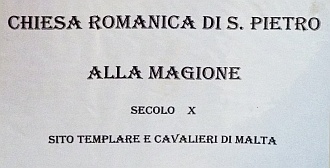 Index
Index

Tuscany is a region in the West of Italy with beautiful landscapes covered with vineyards that produce famous wines such as Chianti and Brunello di Montalcino. Tuscany is notable not only for its excellent culinary and gastronomic traditions, but also as the birthplace of the Italian Renaissance that gave rise to such luminaries in arts and sciences as Michelangelo, Galileo Galilei, Leonardo da Vinci and Botticelli.
Florence is the capital of Tuscany and has some notable museums and cathedrals, Pisa is best known for its leaning tower, and Siena has a picturesque historic district and various shrines and churches venerating Saint Catherine of Siena, patron saint of Italy.

Siena was settled by the Etruscans in about 900-400 BC. They built canals for irrigation and made the land suitable for farming. The Etruscans liked to build their homes in the hills that were easier to defend. After the Roman conquest, a town called Saena Julia was established at the site during the reign of Emperor Augustus. Today, Siena has over 54 thousand inhabitants and many ancient and medieval structures still survive. Some portions of the walls that encircled the city during medieval times have been preserved, and the historical section of the city with narrow streets, once used by horse carts, now allows only pedestrians.
The main square in Siena, Piazza del Campo, is the setting for the Palazzo Pubblico (Town Hall) and one of the tallest towers not associated with a church built in medieval Italy, the Torre del Mangia which has a height of 88 meters.
Twice each year, on the 2nd of July and the 16th of August, a traditional medieval horse race called the Palio di Siena is held on the Piazza del Campo. The Palio is a flag with an image of the Virgin Mary painted by well-known artists. Seventeen equestrian teams compete against each other for the honor of carrying the banner. The Palio race attracts large crowds and thousands of television viewers. The Contrade museum has a collection of the Palios used in previous races.
San Domenico Basilica in Siena, also known as Basilica Cateriniana, was built by the Dominican Order in the mid-1100s. It is one of Siena's most important religious structures. The original basilica was expanded in the 1300s in the Gothic style. The inside of the church looks enormous and fairly empty compared with other churches because it does not have central pillars that obstruct the view. The main altar has a background of stained glass that looks modernistic, and the walls display paintings depicting scenes from the life of Saint Catherine. An adjoining chapel with an ornate altar houses the saint's mummified head behind a grid of iron bars.
Saint Catherine died in Rome in April of 1380. The people of Siena wanted to have her body, but they knew that they could not take it out of Rome past the guards. They cut off the head and smuggled it out in a bag filled with rose petals.
The Santuario Cateriniano is a shrine to Siena's Saint Catherine. The sanctuary is located above the house where Catherine lived. Catherine was born in March 1347 in Siena. She had her first vision of Christ around the age of six. She said that Jesus smiled at her, blessed her, and left her in ecstasy. She vowed chastity at the age of seven.
Catherine spent her life helping the ill and the poor, and her pious activities attracted many followers. She traveled and wrote advocating reform of the clergy, peace, repentance and renewal. Catherine practiced extreme fasting and progressively reduced the amount that she ate. The clergy and her peers thought that her eating habits were unhealthy, and Catherine herself described her stomach pains, vomiting, and inability to eat as an illness which she accepted as a form of penance. Catherine died malnourished in 1380 at the age of thirty-three. Pope Pius II canonized her in 1461.
San Pietro alla Magione
Walking along the via Camollia in Siena, you will encounter a small church
called San Pietro alla Magione that was built in the year 998.
The church has a single nave with walls decorated with monochrome images of
biblical stories from the old testament.
During the 12th century, the church was a meeting place for templar knights whose
mission was to protect pilgrims on their journey to visit the Holy Places in Israel.
A sign in Italian in the church says "Romanesque church of San Pietro alla Magione,
tenth century, templar site and knights of Malta".
